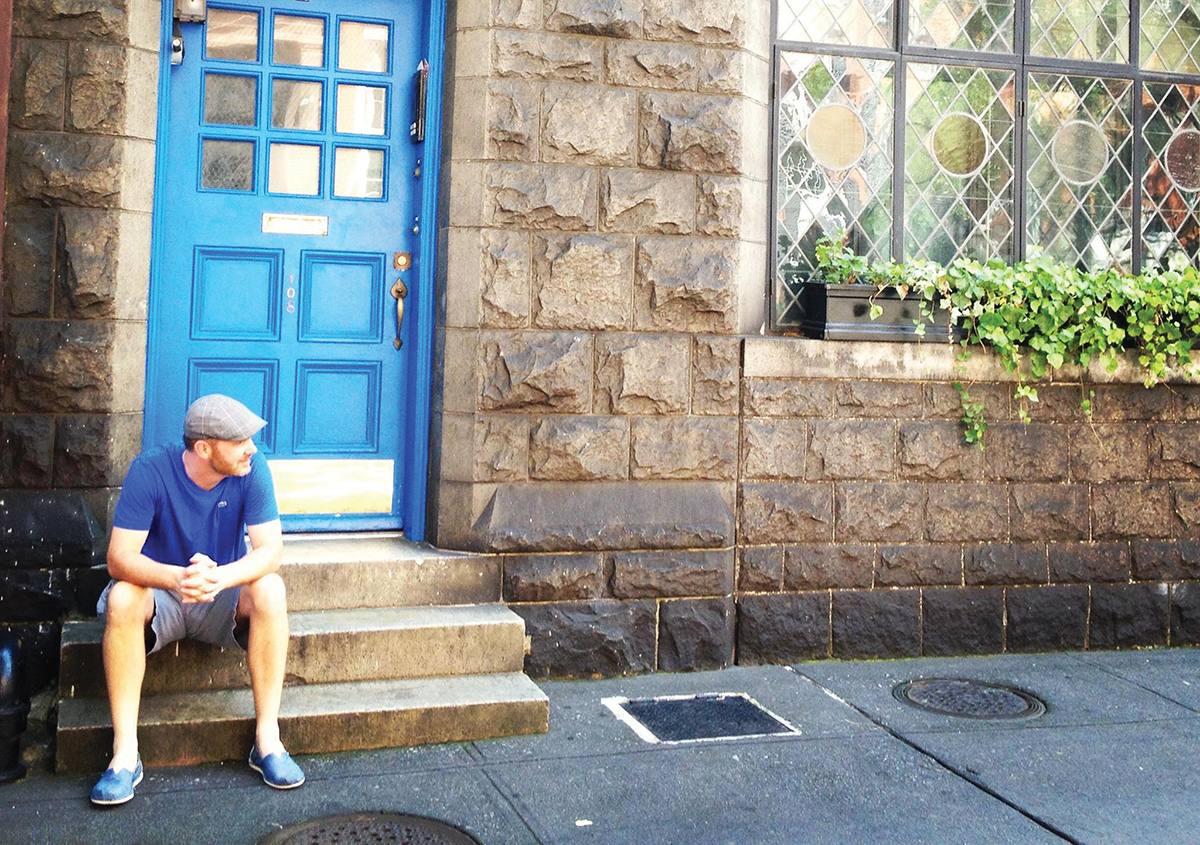
by Kenneth Surles, PhD candidate, Department of History
The second anniversary of Obergefell v. Hodges (2015)—the landmark U.S. Supreme Court case that legalized same-sex marriage nationwide—provides an opportunity to reflect on the remarkable progress the nation has made towards LGBTQ+ rights. Americans are growing more accepting of LGBTQ+ people, and same-sex couples now have access to the thousands of benefits and protections marriage affords. While we can appreciate the appeal and successes of the marriage equality movement, we should also attend to its exclusion and shortcomings. Marriage, in its current form, is a privileging institution that exhausts monogamy, encourages pronatalism, and privatizes many protections and benefits we all depend on for survival. At the end of the twentieth century, when the nuclear family was in decline and legal marriage was becoming less dominant as an institution, the gay rights movement failed to radically disrupt the power of these institutions to compel conformity and selectively confer benefits. In doing so, it created a “good-gay, bad-gay” dichotomy that rendered queers further to the margins of society and shaped the terms by which LGBTQ+ people could gain acceptance and respectability.
Thus, the anniversary should also be a reminder that not all LGBTQ+ people have aspired to marry and form nuclear families. In the decades before marriage equality, queer people devised families that both transgressed the socially sanctioned, white middle-class nuclear family ideal and offered meaningful alternatives to it.1 They created chosen peer families, ballroom families, domestic partnerships, multi-parent households, street families, and many more groups. These creative and highly adaptive kinship systems fulfilled desires, offered a sense of belonging, and helped members cope with myriad oppressions prevalent in the twentieth century. Queer families offer activists and policy makers a liberating model for how to design and implement laws, social programs, and public directives that can help curb the inequalities and deprivations that exist across the whole spectrum of family arrangements in America.2
In the post-World War II decades, a growing number of LGBTQ+ people left their families of origin and migrated to gay urban enclaves where vibrant subcultures, political organizations, gay businesses, and informal support networks arose. In the context of these communities, many white, middle-class gay men and lesbians formed chosen peer families to provide the reciprocal care and sense of belonging central to their survival and wellbeing. Craig Louis, a white, middle-class gay man from Texas, moved to San Francisco in the 1970s to participate in this new milieu. After being rejected by his biological parents, Craig formed a peer family with a group of friends, lovers, and ex-lovers who vacationed together, celebrated holidays, and enjoyed weekly family dinners. After his diagnosis of HIV/AIDS in 1986, Craig’s peer family became affectionately known as “The Craig Group.” Members of his peer family rotated shifts cooking, cleaning, and chauffeuring Craig to doctor’s appointments, and kept one another company in times of sickness and depression.
Every few months Craig’s chosen peer family sent out a newsletter updating extended friends and acquaintances on Craig’s condition. In 1988, a few months before his death, Martha Ransom wrote:
Craig, I love you. You’ve reminded me of what is best and dearest about being human, . . . I feel afraid and sad when I think about losing you, but I also feel lucky and glad for all the times we’ve had. Whatever else comes your way, be secure in the knowledge that you’ve enriched my life immeasurably and I’ll always be grateful for the chance to have known you.3
Ransom’s tribute to Craig reveals that chosen peer families were not constructed on fleeting friendships or frivolous lovers, but on abiding relationships between people who understood and supported one another throughout life.
While gay men held a range of relational and sexual values, many believed that multiple sexual partners could exist without destabilizing their primary emotional relationship.4 Chosen peer families offered gay men the sexual autonomy that monogamous, marriage-based nuclear families usually denied. In the postmortem newsletter sent out by Craig’s peer family, Allen wrote, “Craig was nothing more, and certainly nothing less than he presented himself to be. Our shared hedonism took [us] to places I could not have gone with many other people. No matter what we did, for Craig it was okay to do whatever felt good for you, without fear of being judged by others.”5 By placing legal marriage at the center of its political agenda, the gay rights movement privileged monogamy over the “hedonistic” sexuality that many gay men considered central to their liberation. It also rendered invisible the mutually dependent peer families that supported and cared for HIV+ men like Craig Louis.
The kinship choices of LGBTQ+ people were structured and constrained by institutional racism, heterosexism, and economic injustice. In response to critical needs such as housing, food, healthcare, and gainful employment, many queer people of color created ballroom families. These families were formed out of “ball culture,” an underground drag scene created in the early twentieth century by queer people of color who were excluded from the broader social, political, and culture institutions indigenous to their communities of origin. Ball culture is a performative social event featuring drag and voguing competitions performed by ballroom families. Those who participate in ball culture are usually young, poor, gender nonconforming people of color, who have been rejected by their families of origin.
Ballroom families are more than a site of leisure or entertainment. They offered members an accepting and supportive environment to discover and express flexible and non-binary gender identities.6 As gender theorist, Judith Butler noted, “These men mother one another, house one another, rear one another, and the resignification of the family through these terms is not a vain or useless imitation, but the social and discursive building of a community, a community that binds, cares, and teaches, that shelters and enables.”7
Pepper LaBeija, housemother of New York City’s House LaBeija during the 1980s and 90s, emphasized the sense of belonging that queer people of color derive from ballroom families, “When someone is rejected by their mother, father, and family, they get out into the world and they search . . . for someone to fill that void. . . . I’ve had kids come to me and latch on to me like I am their mother or father and they can talk to me because I’m gay and they are gay.”8
LGBTQ Americans challenged their exclusion from the institutions of marriage and the nuclear family by constructing queer families of resilience. These families were built on reciprocal patterns of care, emotional support, sexual satisfaction, material sustenance, and a sense of belonging. While marriage equality should be celebrated for the important benefits it has extended to same-sex couples and their children, we should also consider that it has undermined the sexual autonomy, gender identities, and flexible families formed by many queer people. It has also done little to address the racial and economic marginalization that trans-people, queer people of color, sex workers, and working-class LGBTQ+ people continue to confront. As long as access to political, social, and cultural institutions is based on conforming to heteronormative values, the rights of LGBTQ+ Americans are on unsteady ground. Queer activists and their allies should continue to fight for policies that de-institutionalize social relationships, guarantee every American access to basic economic needs, and honor the self-determination of all Americans to define their sexuality, gender, and family in ways that align with their sense of self, allowing them to fulfill desires, and to meet the needs of the communities they inhabit.
—Kenneth Surles served as a graduate teaching fellow for the UO Department of Women’s and Gender Studies while working toward his PhD in the Department of History. He studies modern U.S. history, with a focus on marriage and family, gender and sexuality, and LGBTQ history; and he earned his M.A. In U.S. History from the University of North Carolina at Greensboro (2013). Surles received a 2016-17 CSWS Graduate Student Research Grant toward work on this project.
End Notes
1. In the decades after the Second World War, the bourgeois nuclear family, which consisted of a monogamous, heterosexual married couple living under one roof with their biological children, became the iconic standard against which all other kinship systems were judged. My use of the term “queer” refers to the non-normative or non-conforming attributes of LGBTQ+ families that transgressed these ideals.
2. Timothy Laurie and Hannah Stark. “Reconsidering Kinship: Beyond the Nuclear Family with Deleuze and Guattari.” Cultural Studies Review 18, no. 1 (2012): 19-39.
3. Martha Ransom, “The Craig Report, 1987-1988,” December 1987, Craig Louis Papers, Box 1, Folder 2.
4. Brad Van Eeden-Moorefield, Kevin Malloy, Kristen Benson, “Gay Men’s (Non)Monogamy Ideals and Lived Experiences,” Sex Roles 75, no. 1 (2016): 43-55.
5. Harold to “The Craig Group,” July 17, 1988, Craig Louis Papers, Coll. 1988-02, Box 1, Folder 2, GLBT Historical Society, San Francisco, CA.
6. For a detailed study of ball culture see Marlon Bailey, Butch Queens up in Pumps: Gender, Performance, and Ballroom Culture in Detroit. (Ann Arbor, MI: University of Michigan Press, 2013).
7. Judith Butler, Bodies that Matter: On the Discursive Limits of “Sex” (London; Routledge, 1993). 137.
8. Paris Is Burning. Jenny Livingston. Off White Productions, 1991.

